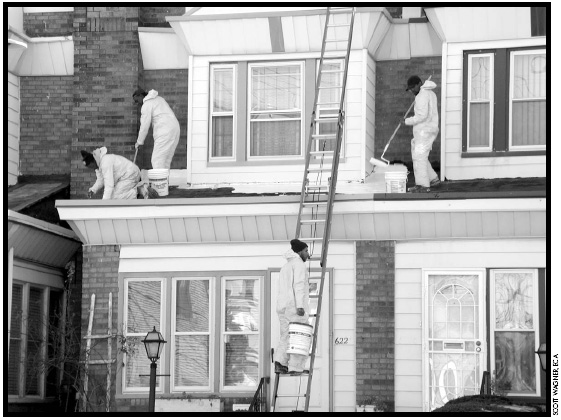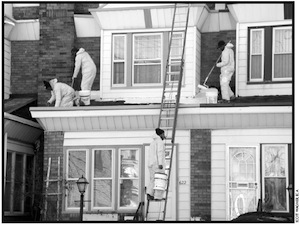 Making cool roofs in Philadelphia. Photo by Scott Wagner, Energy Coordinating Agency
Making cool roofs in Philadelphia. Photo by Scott Wagner, Energy Coordinating Agency
There are cool roofs and not so cool roofs, and it has nothing to do with fashion. A cool roof reflects the non-visible part of the sun into space, reducing the atmospheric temperature, and reducing the temperature of whatever is beneath the roof. The same phenomenon is true on a global scale, if you consider the Arctic circle to be the roof of the world. As global average temperature increases, the Arctic becomes warmer, the snow melts, and seawater takes its place. Snow is a great reflector of invisible light; seawater isn’t.
In the cities of the United States, it has been common to roof buildings with tar and gravel. But the result of that practice is that the summer temperatures in many large cities is up to 5°F higher during the day and 20°F higher at night than in the surrounding suburban and rural areas, where there is more green space. Lately, in cities like Chicago and San Francisco, builders are using white roofs or colored roofs that reflect light in the invisible range.
A typical white roof is made using a highly reflective elastomeric covering. But there are colored roofing shingles that look a lot like the traditional composite shingles that you find everywhere on houses. Only the reflective shingles reduce roof temperatures by 50°F to 60°F in the summer, reducing cooling load and air conditioning bills. Scientists at Lawrence Berkeley National Laboratory helped produce the reflective coatings that allow shingles to be something other than pure white.
